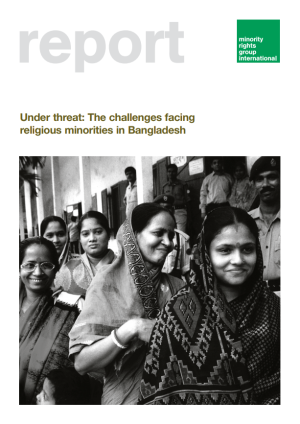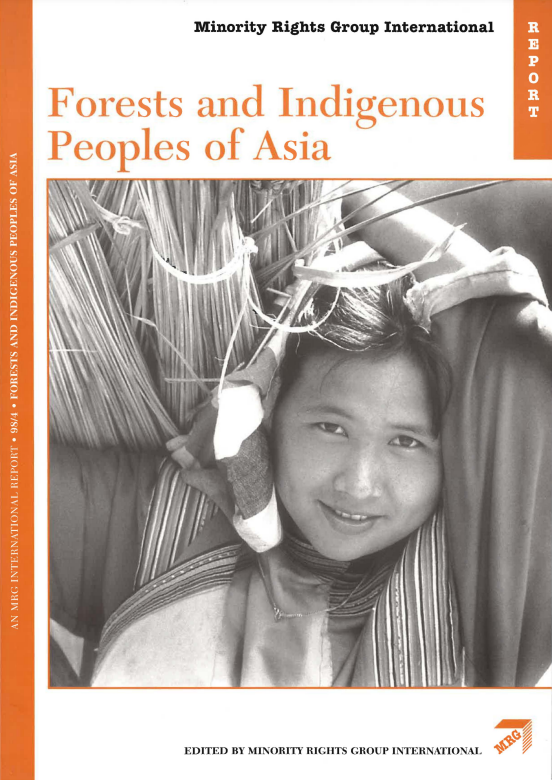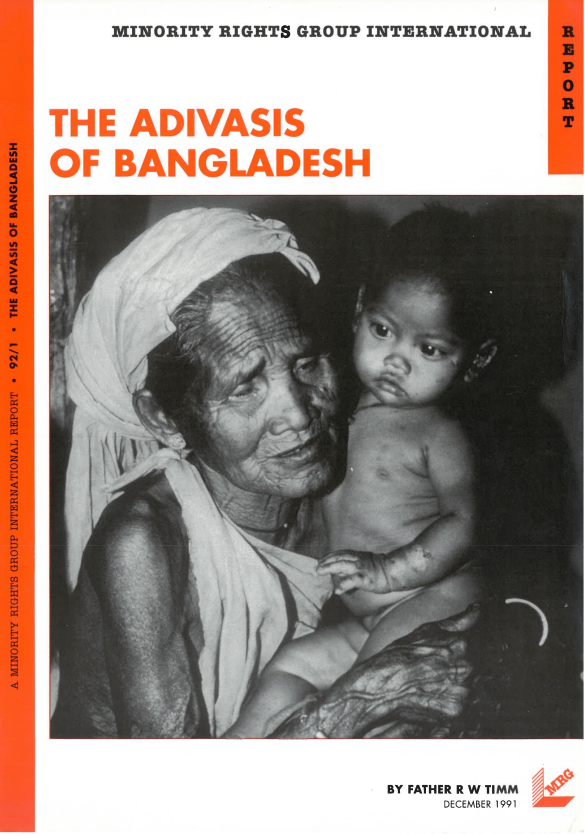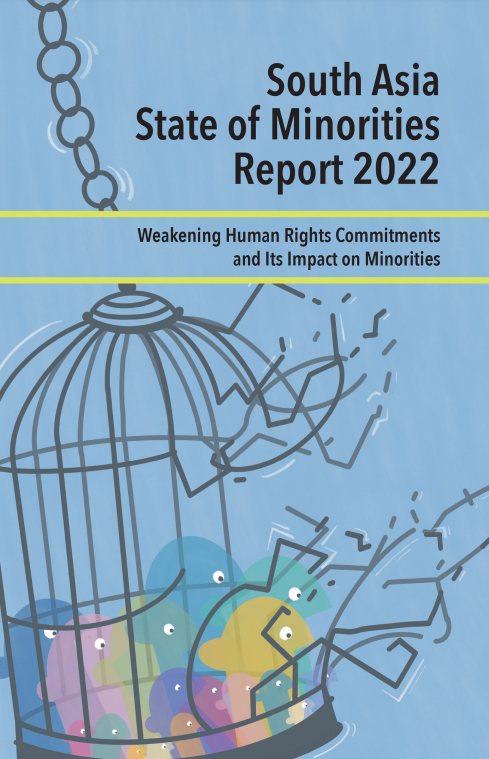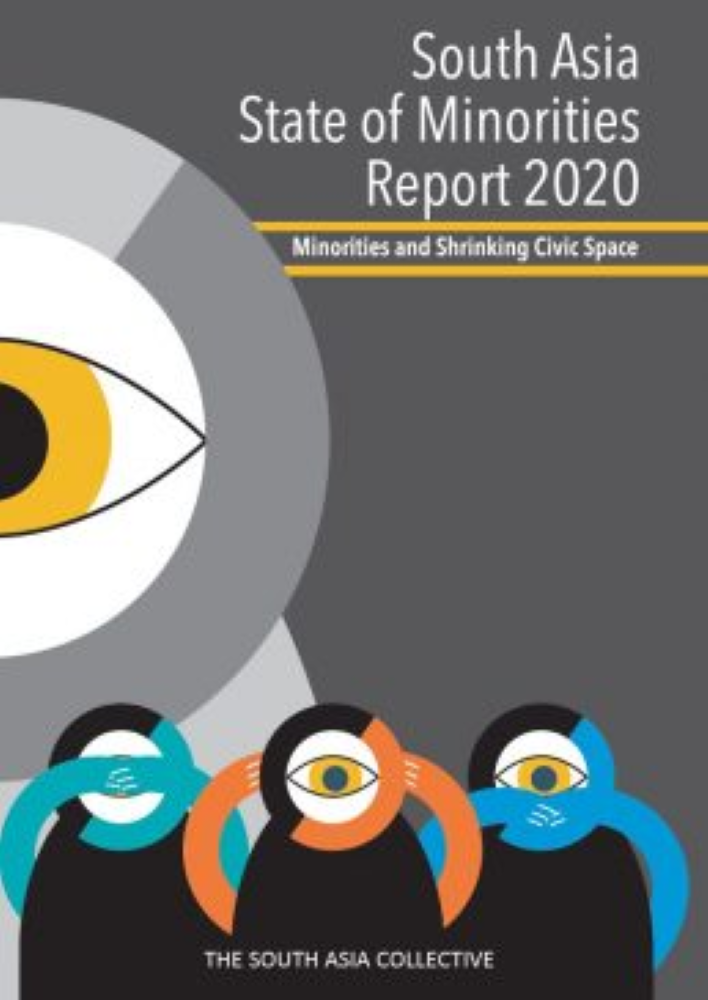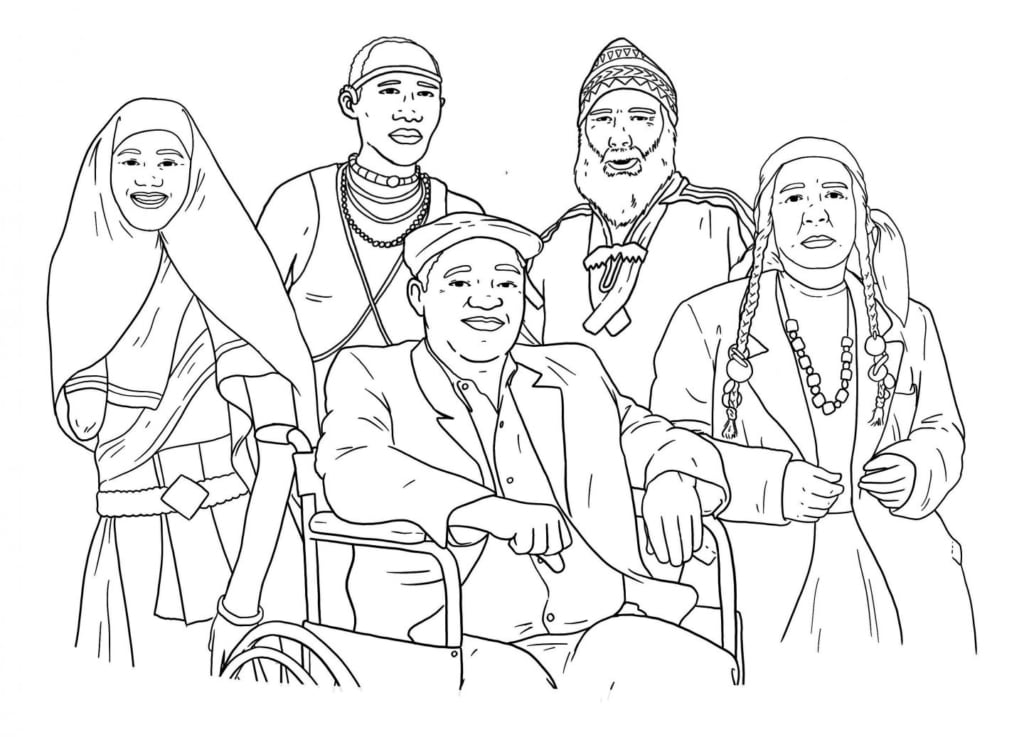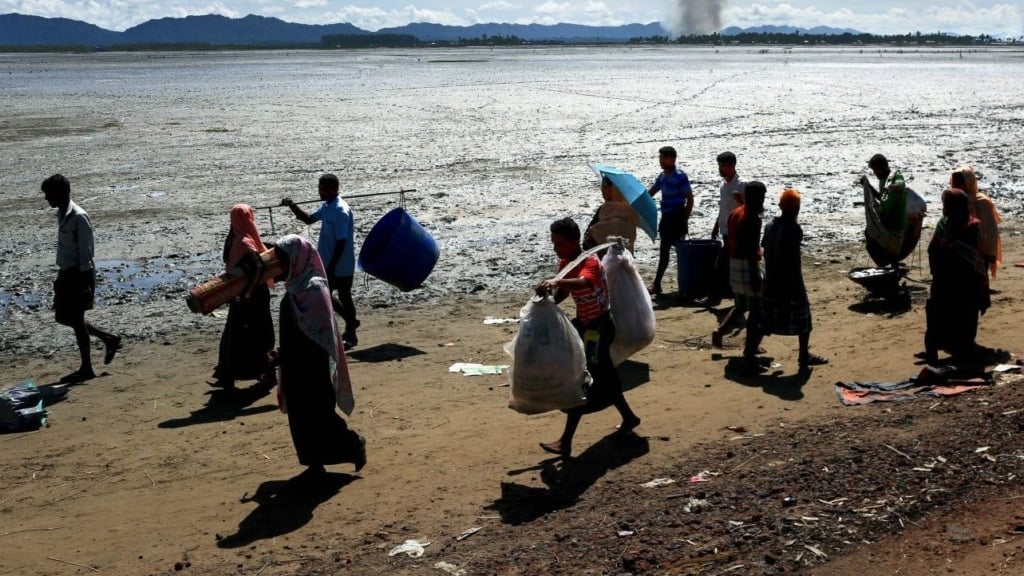Bangladesh
-
Religious minorities: Hindus (8.5 per cent), Buddhist (0.6 per cent), Christian (0.3 per cent)
Main languages: Bangla (national language), English
Main religions: Islam, Hinduism, Buddhism
The majority ethnicity is Bengali, an ethno-linguistic group, comprising over 98 per cent of the population. According to the 2011 Census, approximately 1.8 per cent of the population are indigenous ‘Adivasis’, amounting to around 1.6 million – though some community representatives claim the actual figure is considerably higher. The majority live in the plains of the north and southeast, as well as the Chittagong Hill Tracts, where they are also referred to as Jumma. The predominant groups are Chakmas, Marma and Tripura. The government recognizes 50 ethnic groups but not does recognize the concept of indigenous peoples.
Bangladesh’s trajectory in the decades since independence has seen a shrinking in its religious diversity, reflected in the relative decline of religious minorities from 23.1 per cent of the population in 1971 to 9.6 per cent today – a contraction largely due to the mass migration of its Hindu population, who at 8.5 per cent make up the largest religious minority, followed by Buddhists (0.6 per cent) and Christians (0.3 per cent). In addition, some indigenous peoples, such as Mro, practice animism.
Approximately 300,000 Biharis form a small but significant minority ethnic group living in and around the capital city Dhaka.
However, while the majority of Muslims are Sunni, a small proportion are Shi’a and as such represent a sectarian minority. Similarly, the approximately 100,000 Ahmadis, who self-identify as Muslim, have for decades been stigmatized by extremist groups who have called for the community to be formally designated as non-Muslim.
-
Environment
Bangladesh is surrounded to the west, north-west and east by India, shares a south-eastern border with Burma and has the Bay of Bengal to its south. At the time of the independence of India (August 1947), Bengal was partitioned into East and West Bengal on religious lines. East Bengal with a Muslim majority population was designated as the Eastern ‘wing’ of Pakistan, the same geographical boundaries were inherited by the State of Bangladesh in December 1971. With a population of over 160 million and a land area of approximately 144,000 square kilometres, Bangladesh is densely populated.
Bangladesh is dominated by the Ganges-Brahmaputra Delta, and its annual monsoon periods has made the country prone to considerable flooding and devastation. As a disaster-prone region and so densely populated, Bangladesh also faces a range of severe environmental problems which include air pollution, arsenic contamination, deforestation and soil erosion.
History
Modern-day Bangladesh was born in 1971, following the bloody fight for independence known as the Liberation War, which resulted in Bangladesh (then East Pakistan) gaining independence from Pakistan (then West Pakistan). The Liberation War resulted in the deaths of an unknown number of Bangladeshi civilians, including many members of religious minorities, and left a lasting mark on the country. The conflict, while ensuring Bangladesh’s independence, nevertheless left a legacy of political turmoil that has further impeded the rights and freedoms of minorities.
The legacy of imperial rule, 1905-47
In 1905 the Bengal province of India was partitioned, effectively separating the predominantly Muslim eastern area from the mostly Hindu western area. The motivation of the British colonizers to enact the Partition of Bengal was purportedly to improve the administrative effectiveness of the large province, particularly in the neglected eastern areas, though in practice it was heavily driven by a desire to weaken Hindu-led opposition to British rule in Bengal.
While the Partition was largely welcomed by the Muslim majority in the east, who saw in it prospects for political, social and economic advancement, many Hindus regarded it as an attempt to weaken the Indian nationalist movement. Due to the resistance and unrest the Partition provoked, led by Calcutta-based Hindu elites in the influential Swadeshi movement, it was annulled in 1911, after which the two sections of Bengal were formally reunified. However, this led to lasting resentment among many Bengali Muslims in the east who had benefited from the Partition.
During the period following the reunification of Bengal, other divisions were made based on language. In 1947, however, the whole of India was divided along religious lines. This had a lasting impact on inter-communal relations in the newly independent states.
Partition and the struggle for independence, 1947-70
Many Muslim leaders in the subcontinent believed the 1947 Partition would bring much-needed protection for the region’s Muslim population, but these sentiments gradually evolved into increasing frustration and dissent. Adding to these concerns was the refusal of the Pakistani government to recognize Bengali as an official language of united Pakistan and their insistence on Urdu being the official language of the country. The 1947 Partition, which created a Muslim nation made up of West Pakistan (now Pakistan) and East Pakistan (now Bangladesh), led to a divide between Urdu and Bengali speakers, culminating in what is known as the (Bengali) Language Movement. From 1947 to 1951, the tense debate regarding language mostly took place in parliamentary debates and newspaper articles. By 1952, however, the movement had become more confrontational in nature, directly challenging state authority. In February that year, police opened fire on protesters at Dhaka University, killing a number of students and sparking unrest across the country. At the same time, religious minorities faced an increasingly hostile environment as Pakistan enacted a series of repressive measures, including the passing in 1965 of the Enemy Property Act that paved the way for the widespread expropriation of Hindu-owned land. Islamiyat was also made compulsory for all students between classes 6 and 8 during this period.
The persistent social, political and economic exclusion of East Pakistan galvanized the formation of a Bengali nationalist movement centred around the Bangladesh Awami League. Under the leadership of Sheikh Mujibur Rahman, who advocated for greater political and economic autonomy from central government, the Awami League eventually achieved a landslide victory in Pakistan’s 1970 election, winning 167 of the 169 seats in East Pakistan. In a bid to stop the east gaining independence, the West Pakistan military was deployed in March 1971 to East Pakistan, leading to the deaths of an unknown number of civilians – estimated by some sources as between 300,000 and 500,000, though the official government estimate is 3 million – in a targeted campaign that only ended with the military’s surrender on 16 December 1971 and included widespread sexual violence. Many millions were forced to flee to India, where they lived in poor conditions in refugee camps. Religious minorities, particularly the Hindu population, were specifically targeted.
Post-independence: the rise of majoritarian politics
Following the withdrawal of Pakistani military forces, the newly independent Bangladesh passed its first national Constitution in November 1972. This established ‘nationalism’, ‘socialism’, ‘secularism’ and ‘democracy’ as central principles of the state, paving the way for an inclusive environment for different religious communities to coexist. In particular, Article 12 of the Constitution called for the elimination of ‘communalism in all its forms; the granting by the state of political status in favour of any religion; the abuse of religion for political purposes; any discrimination against or persecution of persons practising a particular religion’.
However, in other areas its provisions fell short, particularly in its designation of Bengali as the sole state language and its declaration that Bangladeshi citizens would be known as Bengalis (Article 6) – emphasizing Bengali nationalism as being based on the ‘unity and solidarity of the Bengalee nation, which derived its identity from its language and culture’ (Article 9), in what was designated a unitary state (Article 1). To an extent drawing on narratives of the Liberation War, premised on Bengali nationalism, this effectively excluded the many culturally and linguistically non-Bengali communities in the country: according to some estimates these include around 45 different groups, such as indigenous peoples in the Chittagong Hills, the majority of whom also belong to religious minorities, as well as other groups such as Bihari Muslims.
In 1975, Rahman was assassinated, beginning a long period of military rule that only ended in December 1990. These years saw the increasing entrenchment of a majoritarian politics that placed emphasis on the role of Islam in the country’s political affairs, often at the expense of religious minorities and their rights. In 1977, for example, the Constitution’s stated principle of ‘secularism’ was replaced with the declaration that ‘Absolute trust and faith in the Almighty Allah shall be the basis of all actions.’ This was reinforced in 1988 by then President Lieutenant General Hussain Muhammad Ershad’s passing of the Eighth Constitution Amendment Act, declaring Islam the official state religion.
Indigenous land grabbing and the settlement of the Chittagong Hill Tracts
Located in south-eastern Bangladesh, the Chittagong Hill Tracts (CHT) have long been populated by a diverse range of non-Bengali ethnic and linguistic groups, such as Chakma and Marmas. Predominantly Buddhist, though in some cases also practising elements of Hindu religious rituals, even before Partition in 1947, these communities faced increasing pressure from displacement and the migration of large numbers of Bengali settlers to the area. With Partition, the area was controversially ceded to Pakistan rather than India, despite the majority of population being non-Muslim.
These and other factors – including the construction of the Kaptai Dam in the late 1950s and early 1960s – were the cause of considerable conflict as indigenous peoples were impoverished or forced from their land amid a rapid shift in population, actively encouraged by the government. While the indigenous population comprised more than 98 per cent of the population in 1947, the influx of Bengali settlers in the years that followed – rising to 9 per cent in 1956, 40 per cent by 1981 and 50 per cent of the local population in 1991 – dramatically shifted this demographic. This process was actively accelerated by the government’s policy, beginning in the late 1970s, to resettle hundreds of thousands of Bengali migrants through various incentives. This programme, also pursued by subsequent governments, came shortly after the outbreak of armed conflict between the Bangladeshi army and the Shanti Bahini, a guerrilla force drawn largely from local hill tribes. This was the armed wing of the Jana Samhati Samiti (JSS) United People’s Party, whose key demands were for constitutional recognition of indigenous identities, as well as regional autonomy. In this context, resettlement was seen as a tool to evict or assimilate the indigenous population. The conflict brought about particularly widespread violence in the 1980s and 1990s, which led thousands of indigenous people to migrate to India.
While the conflict was formally brought to an end with the signing of the 1997 CHT Peace Accord, most of its terms have yet to be implemented and in the meantime the problem of targeted violence against the community, including sexual assault, remains widespread. While sexual violence was used as a weapon of war during the conflict, with large numbers of indigenous women reportedly raped during this period, Bengali settlers and security forces continue to perpetrate attacks against them to this day. Impunity for the perpetrators, with few attacks even reported, let alone prosecuted, has encouraged further attacks. The protracted nature of this problem was illustrated by the announcement in October 2016 that the investigation into the case of Kalpana Chakma, a female indigenous rights activist abducted in 1996 who has not been heard from since, was being formally closed due to lack of evidence, despite extensive testimony from witnesses apparently identifying some of the main perpetrators. Furthermore, the continued presence of large numbers of Bangladeshi military personnel has only exacerbated insecurity in the area, while providing little or no protection for indigenous residents. Land loss continues to be endemic, with the Kapaeeng Foundation reporting that more than 5,200 acres of land within the CHT were appropriated by officials, local settlers and companies during 2015 alone for plantations, tourist resorts and other uses.
Growing sectarian divisions
Even after the end of military rule and the restoration of democratic politics, the role of religion in civil life and the status of minorities within Bangladesh has continued to be contested. Political tensions between supporters of the secular Awami League, who held power throughout the 1990s, and the BNP, as well as a number of other parties such as Jamaat-e-Islami, have frequently led to boycotts, arrests and even violence. This political turbulence persisted between 2001 and 2008, with the BNP in power, before a landslide result in the December 2008 elections saw the Awami League regain control of parliament.
While the roots of religious discrimination extend back to colonialism and the bitter legacy of Partition, the marginalization of Bangladesh’s minorities has persisted since independence. One continued source of insecurity is the broader regional context elsewhere in South Asia, including the treatment of India’s Muslim minorities. In 1992, for example, the destruction of the Babri Masjid mosque in India led to large-scale rioting in Bangladesh, the looting of Hindu shops and businesses, targeted sexual violence and the deaths of at least 10 people. At the same time, ongoing political developments have served to deepen social divisions, with minorities frequently bearing the brunt of the ensuing violence as they are assumed to be Awami League sympathizers.
The International Crimes Tribunal
The International Crimes Tribunal (ICT) was established in 2009, after the Awami League came to power to prosecute individuals responsible for atrocities during the 1971 conflict. While the ICT could potentially bring justice for atrocities committed against Bangladesh’s minorities, the proceedings have been plagued with attacks against them, Hindus in particular, and allegations of not meeting international fair trial standards. The subsequent proceedings have been highly politicized, as many of those tried are former or current members of the opposition BNP or their coalition partner, Jamaat-e-Islami. Verdicts reached throughout the first half of 2013 resulted in widespread protests, both in support of and against the rulings. In December 2013, a key figure in Jamaat-e-Islami, Abdul Quader Mollah, was executed as a result of an ICT ruling against him for crimes against humanity. Ex-minister of the BNP Abdul Alim received a life sentence from the ICT in October 2013 for two acts of genocide, including speeches inciting violence against Hindus. The rulings resulted in retributive attacks against minorities. Hindu community members have claimed that mob attacks by Jamaat-e-Islami party supporters in early 2013 resulted in damage to more than 50 temples and the destruction of over 1,500 houses.
In December 2014, A.T.M. Azharul Islam, assistant secretary general of Jamaat-e-Islami, was sentenced to death for the killing of 1,400 Hindus near Jharuarbeel on 17 April 1971. Jamaat-e-Islami organized nationwide protests in response, though these were on a much smaller scale than the demonstrations organized in 2013 against the court rulings, when numerous Hindu temples and homes were attacked.On 18 November 2015, the Bangladesh Supreme Court rejected the death sentence appeal petitions of Ali Ahsan Mohammed Mujahid of the Jamaat-e-Islami party and Salahuddin Qader Chowdhury of the BNP, both of whom were charged with genocide for their role in killing Hindus, among other charges. Both were subsequently hanged on 22 November, despite accusations that the trials were politically motivated and allegations of procedural misconduct, including arbitrary limiting of witnesses.
The rise of extremism
Since 2013, extremist organizations such as the Al Qaeda-inspired Ansarullah Bangla Team and Al-Qaeda in the Indian Subcontinent have established or strengthened their presence within Bangladesh. This development has been accompanied by a spate of brutal attacks particularly targeting Hindus, Christians, Buddhists, Ahmadis, Shi’a Muslims and a variety of other groups, including atheists, LGBT (lesbian, gay, bisexual and transgender) activists and foreigners. While the identity of the perpetrators has not always been clear – the Bangladeshi government has consistently denied the presence of ISIS-affiliated militants within the country, despite the group claiming responsibility for many of these incidents – a continuum undoubtedly connects the recent wave of violence with the deep-seated discrimination that religious minorities in Bangladesh have struggled with for decades.
The precarious situation of religious minorities in the country was further undermined by the 2014 elections, the most violent in Bangladesh’s history, with religious minorities specifically targeted in many parts of the country, particularly the north and southeast. Many Hindu businesses and homes were singled out, with some attacks also aimed at Christians. A large number of these attacks were reportedly driven by disputes over land and property. The anniversary of the election in 2015 saw renewed violence between government and opposition groups. The resulting political deadlock between the Awami League and the BNP, the main opposition party, has created a highly adversarial environment that extremist groups have been able to exploit to their own advantage. Meanwhile, the Awami League government’s heavy-handed stifling of dissent, including enforced disappearances, torture and extrajudicial killings, has only served to further impede the country’s shrinking democratic space, with civil society and journalists operating in an increasingly restricted environment.
In this context, the difficulties experienced by Bangladesh’s religious minorities have intensified. Religious minorities continue to face persecution, land theft and the threat of violence, with successive governments apparently unable or unwilling to address the underlying causes. Numbering among the poorest and most marginalized sections of the Bangladeshi populations, their situation has been further exacerbated by land grabbing and exclusion from many areas of employment.
Governance
On paper, religious minorities are afforded freedom of belief and worship within the Constitution. Besides affirming the equality of all citizens before the law and their right to protection, the text also stipulates that ‘The State shall not discriminate against any citizen on grounds only of religion, race, caste, sex or place of birth.’ Furthermore, ‘every citizen has the right to profess, practice or propagate any religion’ and ‘every religious community or denomination has the right to establish, maintain and manage its religious institutions’. However, though the removal of the ‘secularism’ principle in the Constitution was reversed in 2011 by the Awami League government, Islam has retained its designation as the state religion. A legal challenge, first lodged in 1988 when the amendment was made, was formally rejected in March 2016.
A separate issue, technically related to indigeneity rather than religion but disproportionately affecting the Buddhist and Christian communities who make up the majority of Bangladesh’s indigenous peoples, is the fact that their status is still not officially recognized. The Constitution’s 2011 amendment refers to them as ‘tribes’, ‘minor races’ and ‘ethnic sects and communities’, but crucially not as ‘indigenous’ – a designation that would strengthen their land rights. Indeed, as the International Crisis Group has noted, ‘as recently as October 2015, the government issued circulars warning against use of that word to describe ethno-religious minorities in any events hosted on public property’.
Other pieces of national legislation implicitly support the equal protection of minorities against violence and discrimination. The 1860 Penal Code explicitly condemns murder, rape, abduction and other abuses against all citizens, as well as the damage or defilement of places of worship, the intentional outrage of religious feeling and the disturbance of religious assembly – all threats impacting especially on minorities, though at present the charges are often used against those accused of criticizing Islam, including many minority members. Similarly, Bangladesh’s law explicitly criminalizes many of the offences that have characterized attacks against minority communities.
The Women and Children Repression Prevention Act 2000, for instance, stipulates that those guilty of kidnapping should be ‘punished with transportation for life or with rigorous imprisonment for either description, which may extend to fourteen years and also with fine’, while ‘whoever commits rape with a woman or a child, shall be punished with rigorous imprisonment for life and with fine’. The International Covenant on Civil and Political Rights (ICCPR), acceded to by Bangladesh in 2000, stipulates that each state should take steps ‘to respect and to ensure to all individuals within its territory and subject to its jurisdiction the rights recognized in the present Covenant, without distinction of any kind’, and confers on minority groups the right ‘to enjoy their own culture’ and ‘to profess and practice their own religion’.
There is also a range of other conventions signed or acceded to by Bangladesh – for example, the Convention on the Elimination of all Forms of Discrimination against Women and the International Convention on the Elimination of all Forms of Racial Discrimination – that have particular relevance for the country’s religious minorities, given the threats they face of abuses such as forced marriage. The 1964 Convention on Consent to Marriage, Minimum Age for Marriage and Registration of Marriages, acceded to by Bangladesh in 1998, observes that ‘marriage shall be entered into only with the free and full consent of the intending spouses’ and prohibits marriage under the legal minimum age. Consequently, problems arise not from a legal vacuum but rather the failure to enforce existing legal provisions. At the same time, lack of political will or obstruction has contributed to continued injustices for many minority members. The 2001 Vested Property Return Act, for instance, tabled by the AL just before the end of its term, stipulated a 180-day deadline to prepare a list of vested property with the aim of facilitating its return. The successor BNP government, however, amended the provision of the deadline to an ‘indefinite period’, meaning that, in practice, these measures were not implemented. Only with the passing of the Vested Properties Return (Amendment) Act in 2011 did Hindu families have the legal basis to reclaim their property. Despite this, activists have highlighted the continued failure to restore property to many victims, in part due to obstruction by officials themselves complicit in land grabbing.
-
General
Ain O Salish Kendra (ASK)
Website: http://www.askbd.org/index.php
Amnesty International
Website: http://www.amnesty.orgAssociation for Social Advancement
Website: http://www.asabd.orgCoordinating Council for Human Rights in Bangladesh
Website: http://www.connect-bangladesh.org/partners/bamasop.htmlHotline (HRs) Bangladesh
Tel: +880 2 935 2149Institute of Democratic Rights (IDR)
Email: [email protected]ODHIKAR
Website: http://www.odhikar.orgSociety for Environment and Human Development (SEHD)
Tel: + 80 2 912 1385
Email: [email protected]
Website: http://www.sehd.orgBangladesh Hindu Buddhist Christian Unity Association – USA
http://bhbcucusa.orgAdivasis
Kapaeeng Foundation
Hill Watch Human Rights Forum
Email: [email protected]Biharis
Refugee International (USA)
Website: http://www.refintl.orgMinorities at Risk Project (USA)
Website: http://www.cidcm.umd.edu/marDalits
Bangladesh Dalits and Excluded Rights Organization
Network of Non-Mainstreamed Marginalized Communities
-
Publications
News and updates
Active programmes
Past programmes
Updated June 2019
Related content
Latest
View all-
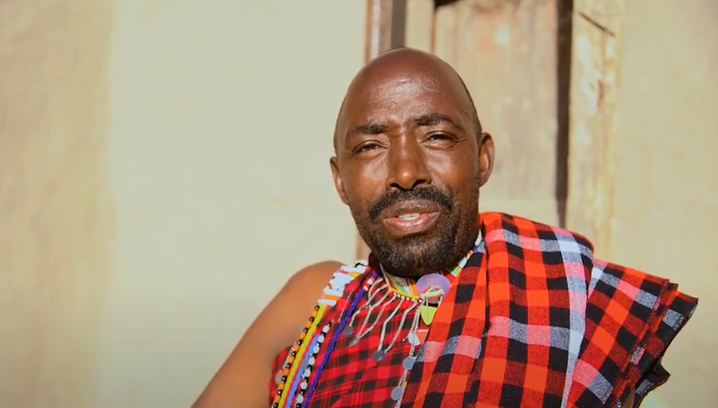
22 February 2024
Empowering Voices: Advocating for indigenous people with disabilities worldwide
This key document discusses the challenges faced by indigenous people with disabilities.
-
30 October 2023
MRG urges UN members to address indigenous peoples’ situation in Bangladesh during 4th Universal Periodic Review (UPR)
Minority Rights Group International (MRG), The South Asia Collective and Nagorik Uddyog Citizen’s Initiative call on UN member states to…
-
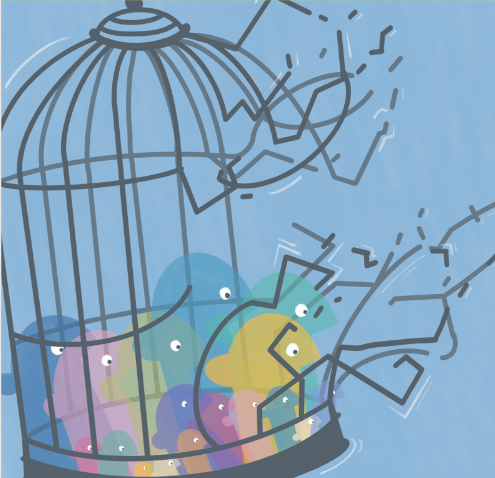
16 February 2023
Minority rights protection in South Asia curtailed by minimal engagement with human rights mechanisms, report finds
Poor engagement by South Asian states with international human rights mechanisms is providing fertile ground for a wide range of rights…
Minority stories
-
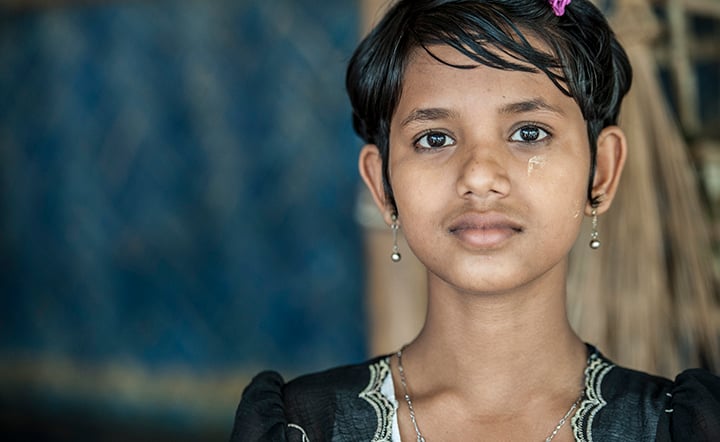
15 September 2017
Denial and Denigration: How Racism Feeds Statelessness
Five organizations from Eastern Europe came together to address the growing concern of online discrimination and hate speech against Europe's biggest minority community, the Roma.
- South Asia
- Discrimination
- Minority stories
Reports and briefings
View all-
17 November 2016
Under threat: The challenges facing religious minorities in Bangladesh
Since 2013, Bangladesh has experienced a series of violent attacks by extremists. The victims have included – besides atheists, secular…
-
1 June 1999
Forests and Indigenous Peoples of Asia
For indigenous peoples in Asia, forests have traditionally represented their lands and their livelihoods. Yet in recent years the region…
-
31 December 1991
The Adivasis of Bangladesh
Ownership and access to land is an issue of immense importance to tribal and indigenous peoples everywhere. Some indigenous land rights are…
Partner publications
View all-
16 February 2023
South Asia State of Minorities Report 2022 – Weakening Human Rights Commitments and Its Impact on Minorities
The condition of minorities in South Asia, home to a fifth of humankind, is grim, to say the least. Religious, ethnic and linguistic…
-
24 January 2022
South Asia State of Minorities Report 2021 – Hate Speech against Minorities
In most of the countries of South Asia, hate speech is increasingly used by majority groups against minorities on the basis of religion,…
-
7 December 2020
South Asia State of Minorities Report 2020 – Minorities and shrinking civic space
Across South Asia, civil society is being increasingly constrained. It is either too nascent, due to late democratic development, or where…
Programmes
View all-
- South Asia
- Disability rights
-
- South Asia
- Religious minorities
-
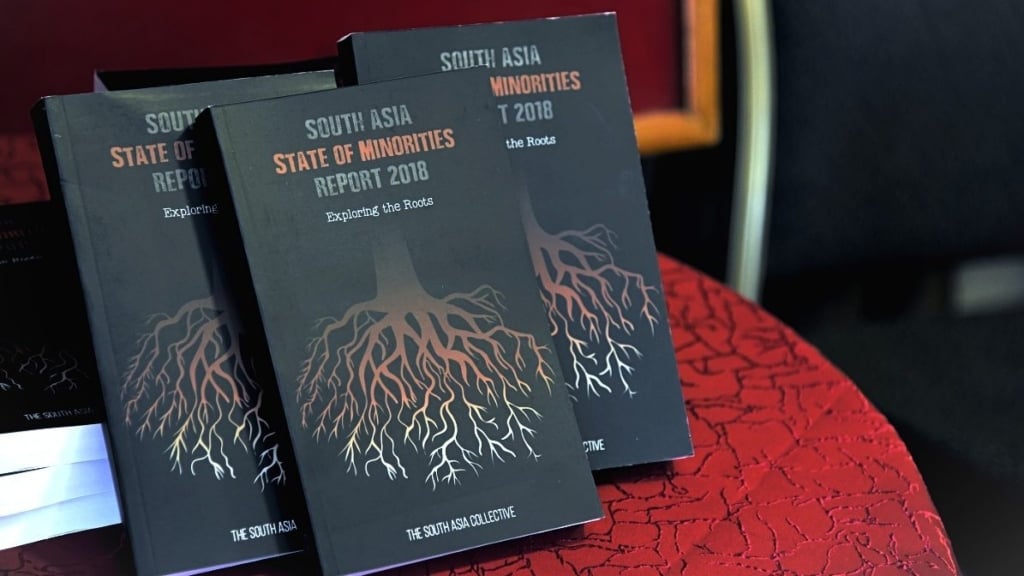
Supporting religious pluralism and respect for freedom of religion or belief across South Asia (SAC)
- South Asia
- Religious minorities
Events
-

25 April 2023 • 6:00 – 8:00 pm BST
The Rohingya Photographer: A new exhibition in East London
‘If we aren’t able to represent ourselves, how will we rebuild our nation?’ Abul Kalam is fighting to get his camera back from the…
Don’t miss out
- Updates to this country profile
- New publications and resources
Receive updates about this country or territory
-
Our strategy
We work with ethnic, religious and linguistic minorities, and indigenous peoples to secure their rights and promote understanding between communities.
-
-
